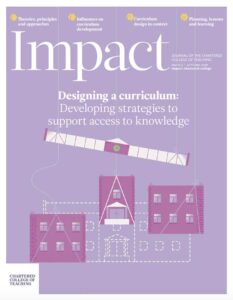Practical approaches to embedding research in schools: Key learning and reflections from the Research in Schools Learning Community
Written by: Sue Sing, Laela Adamson, Iro Konstantinou, Susan Graham, Rachel Stenhouse, Anna Wicking, Pippa Wadey, Sam Rowden-Knowles, Emma Taylor and Hayley Hemming

8 min read
In 2017, the Department for Education published a report that examined the progress of evidenced-informed teaching in England. The findings suggest that despite limited direct application of research in teachers’ practice, evidence was valued and did inform teacher thinking (Coldwell et al., 2017). Alongside this report, there were other developments that showed that evidence-informed teaching was a paradigm that was here to stay. For example, schools began to appoint people responsible for facilitating and disseminating research within their institutions (for the purposes of this article, we refer to these individuals as Research Leads (RLs), although we acknowledge that a range of titles exists for primarily the same role). In addition, the Education Endowment Foundation (EEF) became prominent in many schools, specifically as a result of their ‘Teaching and Learning Toolkit’ research findings, and their funding opportunities that enable schools to become research schools, with
Join us or sign in now to view the rest of this page
You're viewing this site as a guest, which only allows you to view a limited amount of content.
To view this page and get access to all our resources, join the Chartered College of Teaching (it's free for trainee teachers and half price for ECTs) or log in if you're already a member.
This article was published in September 2018 and reflects the terminology and understanding of research and evidence in use at the time. Some terms and conclusions may no longer align with current standards. We encourage readers to approach the content with an understanding of this context.
0
0
votes
Please Rate this content
Please login to comment
0 Comments
Oldest
Newest
Most Voted
Inline Feedbacks
View all comments










